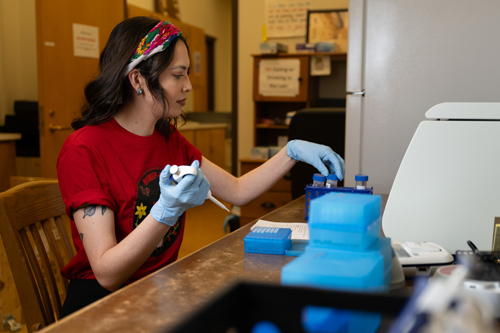It may be difficult to distinguish cataract progression from other age-related vision changes, say vision experts at the University of Alabama at Birmingham. Comprehensive eye exams — which can detect not only cataracts but many other eye conditions — are recommended every two years for adults ages 40-64 and annually for everyone 65 or older. Adults with certain vision conditions, such as glaucoma, may require more frequent exams.
A cataract is a clump of protein deposited on the clear lens at the front of the eye, leaving the lens cloudy or tinted and impairing vision. A cataract can occur in one or both eyes. Those with cataracts may find it harder to drive (especially at night), read printed words and interpret facial expressions. Cataracts are the most common cause of blindness and typically are treated with surgery to replace the lens. The cause is not known, but cataracts are common with aging. By age 80, half of Americans either have cataracts or have undergone cataract-removal surgery.
The term “age-related” is a little misleading. In fact, people can have an age-related cataract in their 40s or 50s, says Waid Blackstone, M.D., at UAB Callahan Eye Hospital Clinic at Pell City.
“In terms of the typical age-related cataracts, the average age of onset is 40-50 years, but most people don’t experience vision problems from that until later,” Blackstone said. “The average age for a cataract surgery patient is 73-75.”
When Symptoms Arise
Many people with cataracts do not recognize the condition until vision impairment reaches noticeable or disruptive levels. The early stages of a cataract usually are accompanied by an increase in nearsightedness, which can be corrected with glasses. As the cataract progresses, night vision may worsen, and colors may appear duller.
“Blurred vision is the primary problem, although that can manifest in a couple of different ways,” Blackstone said. “The first thing most people notice is glare. Light hits the cataract, scatters and makes it difficult see. The common complaint is difficulty driving at night because of glare from oncoming headlights. The flip side is that, in dim lighting, cataracts block low levels of light. The next most common complaint is difficulty reading fine print or seeing smaller images.”
Early cataract symptoms may be improved with new eyeglasses, brighter lighting, anti-glare sunglasses or magnifying lenses. If these measures do not help, surgery is the only effective treatment.
Ease of Operation
Cataract removal is one of the most common operations performed in the United States — and among the safest and most effective. In about 95 percent of cases, people who have cataract surgery enjoy better vision afterward. The approach used most often is phacoemulsification, informally known as “phaco.” Experience and technology have fine-tuned this procedure to replace the eye’s lens, and today it takes only about 15 minutes to perform.
“The phacoemulsification procedure started in the 1970s and became commonplace in the 1980s,” Blackstone said. “We use an ultrasound probe to liquefy the substance of the lens and aspirate it from the eye. Today we’ve tremendously improved our ability to liquefy the lens with greater efficiency. The other major aspect of cataract surgery is the replacement of the lens. The technology for that has come a long way, and we have seen a great evolution in the quality of lens implants.”
If your doctor determines that you have cataracts in both eyes, he or she may recommend operating first on the eye with the denser cataract. If surgery is successful and your vision improves substantially, you may elect to forgo surgery on your other eye. However, having the second eye operation can result in significant benefits, including better depth perception and improvements in the ability to drive and to read.
“The decision for any cataract surgery is based entirely on how the patient is functioning,” Blackstone said. “We have patients with moderate or even severe cataracts that we elect to leave alone, simply because, based on what that patient’s needs are, it may not be a good idea. But we also see patients who can read an eye chart very well but struggle with nighttime glare. It’s when they begin having difficulty with daily activities that we start considering cataract surgery.”


